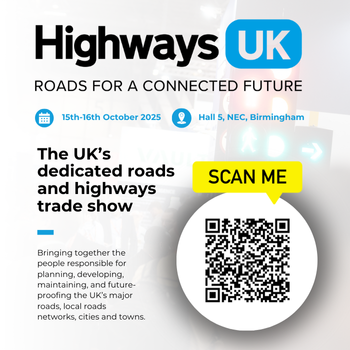NHS Trusts have come under increasing pressure to improve the management of several £100m of assets, from medical equipment onwards, in order to reduce spiralling litigation claims and deliver far greater accountability. But with information stored not only by Finance within the capital asset register but also duplicated across Medical Equipment and Estates departments, attaining a single view of asset history, including location, maintenance and value is impossible.
Now, as it becomes apparent the NHS will face a significant financial shortfall in the near future, it is becoming ever more critical to impose control over asset management to improve performance, maximise resource utilisation and minimise mistakes.
Karen Conneely, Real Asset Management, outlines the need for a single integrated asset register.
Funding Crisis
As the NHS Confederation report reveals that the health service will face the most severe and sustained financial shortfall in its history after 2011, managers are now facing an -extremely challenging financial outlook.
This radical change in fortune comes at a time when NHS Trusts are already under pressure to improve performance through a range of measures to meet the Darzi-led demands for greater efficiencies throughout the health service. Furthermore, as growing numbers of Trusts attain – or seek – Foundation Status, senior managers are now considering the implications of significant budget cuts within an increasingly commercial business model.
The growing focus on finance comes at a time when Trusts have already come under additional scrutiny from auditors looking for greater substantiation of the balance sheet through the verification of the existence and location of capital assets that are collectively worth several million pounds.
Furthermore, Trusts are also under pressure to mitigate the risk of litigation. With the NHS paying out an estimated £650 million to patients in claims annually, often as a result of poorly-maintained equipment or equipment being used without adequate training, Trusts now recognise the need to impose far greater control over the asset register.
Complex Asset Management
But imposing this control is far from simple. Assets are distributed across each hospital- and GP surgery – and managed by different departments including Medical Equipment, Estates and Sterile Services. Furthermore, medical equipment is highly mobile and often leaves the premises on loan to patients.
Each department has its own asset management system, resulting in data duplication and inaccuracy across the Trust. It is extremely difficult to achieve full, up to date visibility of assets without hugely expensive manual data reconciliation exercises performed monthly so that Finance can have any level of confidence in the fixed asset register.
In addition, the lack of a single view of assets across the Finance, Equipment and Estates departments leads to difficulties in assessing an asset’s longer term value to the business. For those with Foundation Trust status, this inadequate visibility makes it extremely difficult to undertake the required analysis of the cost of service delivery and to determine profitable future strategies.
Integrated Solution
There is a growing awareness across the NHS in England & Wales that the only way to impose control over this key asset base is to replace these disparate systems with a single, integrated asset register that not only holds the capital asset information for the finance team but also addresses the requirements of each department.
And this is key: to meet both compliance and efficiency objectives, an integrated solution must cater for the specific needs of each department, from tracking which patient is using a piece of equipment to managing proactive maintenance for the estates department and delivering the full audit trail of equipment sterilisation through each stage of the washing cycle.
By providing each department with a customised view of the single asset register, a Trust can achieve centralised control whilst still ensuring that all operational asset management demands are met.
Critically, the previously time-consuming manual processes for condemning outdated equipment can be streamlined, with full visibility between the relevant department and the central finance team – whilst delivering an audit trail that is essential for complete accountability.
Trusts can also ensure that key compliance requirements are addressed without incurring an administrative overhead: from tracking and reporting on response times using time and date stamped maintenance logs, to creating a full audit trail of patients’ use of equipment, linked to associated training histories to minimise litigation risk.
Commercial Imperative
While a single integrated asset system will enable Trusts to meet compliance requirements and deliver cost savings, it will also enable those providing maintenance services to other organisations -including GP surgeries- with the ability to proactively monitor performance against the Service Level Agreement (SLA).
By aligning assets with service records and histories, organisations can not only assess their condition and recommend maintenance but can also determine whether they are meeting the required performance levels, costing too much in repairs or failing to contribute to the overall business strategy.
This shift to a single system also provides a platform for future innovation: organisations can look to leverage their investment by adopting wireless hand held devices, even RFID tracking, to further reduce the administrative overhead and improve real-time information access.
Maintenance technicians -both internal and third party contractors- can be provided with a PDA containing electronic versions of job tickets; as each job is completed, the information loaded into the hand-held device will automatically and immediately update the core system, removing the risk of rekeying errors and ensuring that information is consistently up to date. This will be key to improving response times to breakdown requests and to delivering ever more cost-effective services both internally and commercially.
Conclusion
The combination of escalating compliance pressure and predicted demand for annual savings of 6% for the years 2011-2014 is driving growing numbers of Trusts to look far more closely at asset management. Whilst wireless technology may not be part of the initial implementation, the ability to combine this level of automation with a single consolidated asset register offers Trusts a compelling solution. By moving from disparate sources of, often duplicated, asset information to a single, consolidated asset register, Trusts are minimising the risk of litigation, improving service levels both internally and for external customers and, critically, delivering the cost savings required to meet the forthcoming years of stringent financial control.








Recent Comments